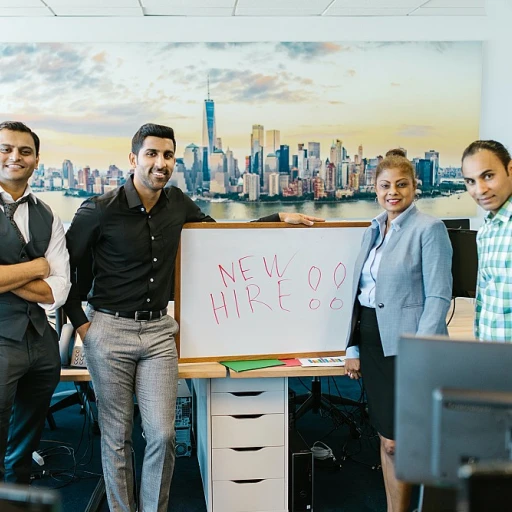Understanding the Right Timing
Deciphering the Best Moment to Move On
Knowing the right time to leave your current job can have a substantial impact on your career trajectory. Whether you are leaving for personal growth, dissatisfaction, or better opportunities, timing is essential. Here are a few pointers to help guide your decision:
- Assess Your Motivation: Before deciding to resign job, take time to evaluate why you want to leave. Consider factors such as job satisfaction, career progression, and work-life balance.
- Analyze Market Conditions: The job market can be unpredictable. Ensure the timing aligns with favorable economic conditions and job prospects in your target industry.
- Evaluate Financial Stability: Consider your financial situation. Having a safety net can alleviate stress during the transition period, especially if you need time for a job search after giving your notice period.
- Read the Signs: Sometimes, the environmental cues can guide your decision. Changes in your company, like restructuring or a toxic work culture, could signal the right time to leave job.
Making an informed decision can ease the transition into your next career move. For more insights on managing mental well-being during transitions, explore this feature on the
impact on mental well-being.
Remember, recognizing when it’s time to move on is just the first step. Once you've made that decision, crafting a thoughtful resignation and communicating effectively with your employer will help you navigate the transition smoothly.
Crafting a Professional Resignation
Constructing a Thoughtful Farewell Note
Leaving a job is a significant career decision and should be approached with consideration and professionalism. A well-crafted resignation letter is a cornerstone of gracefully exiting your current position. In the job market, ensuring your departure is as smooth as possible is important for maintaining positive relationships and leaving the door open for future opportunities.
When preparing your resignation letter, keep it concise yet comprehensive. Clearly state your intention to resign and specify your last day of work, keeping in mind any notice period stipulated in your contract. This will help your employer to plan for your departure and find a suitable replacement in a timely manner.
Here are some key elements to include in your resignation letter:
- Clear Intention: Begin with a direct statement of your decision to leave the job. A simple opening sentence can set a respectful tone.
- Notice Period: Specify your last working day, adhering to the standard notice period requirements. A common practice is giving a two weeks notice unless specified otherwise.
- Gratitude: Express appreciation for the opportunities you’ve had at the company. Mention a few positive aspects you’ve experienced during your tenure.
- Transition Assistance: Offer help during the transition phase by training your replacement or documenting key responsibilities. This shows your willingness to ease the changeover and assist the company.
- Contact Information: Include your contact details for future correspondence to sustain professional relationships.
Avoid airing any workplace grievances or negativity about your employer, as this could detract from the professional tone you aim to maintain. Remember, the way you resign can have lasting repercussions, and it reflects on your professional etiquette.
For more insights on how career transitions can impact your mental well-being, you might find the article on
navigating career transitions insightful as it underlines the nuances of preparing for and adapting to change.
Communicating with Your Employer
Effective Communication Strategies
When it comes to leaving your current job, one of the most crucial steps is effectively communicating your decision to your employer. This isn't just about dropping a verbal note during a busy workday but involves a thoughtful approach. Let's delve into how you can do this with professionalism and clarity.
First, consider timing. It's important to choose the right moment for the discussion about your resignation. Avoid times when your employer or the company is under high stress or when major projects are due. Your consideration here can help soften the impact of your decision.
Next is the delivery. While it may be tempting to email your resignation, a face-to-face meeting is the most respectful and professional route. Remember, your goal is to maintain a good relationship with your employer as you move forward.
Prepare beforehand and rehearse what you want to say. This preparation ensures you are concise and articulate about your reasons for leaving your job and what you hope from this transition. Avoid negative language about the job market or your work experience; instead, focus on your career goals and how this move aligns with them.
During your conversation, be open to feedback. Your employer may have questions or suggestions, and being open to this dialogue can help maintain goodwill. Moreover, discussing the notice period and potential garden leave arrangements can help both parties plan the transition smoothly.
Finally, follow up with a formal resignation letter. This document should reiterate your decision to leave, state your last day of work, and express gratitude for the opportunities you've had at the company.
These communication strategies will not only help you quit your current job gracefully but will also aid in preserving professional relationships as you prepare for your next career move. Engaging in this process professionally can bolster your reputation within your industry and assist you in your next job search. For more insights on traversing career shifts with grace, read about
navigating a career shift in your 30s.
Transitioning Your Responsibilities
Handing Off Your Tasks Efficiently
Transitioning your responsibilities while leaving your current job is a pivotal part of ensuring a smooth exit. Whether you've decided to resign, are on garden leave, or navigating a notice period, comprehending the nuances involved can help both you and your current employer immensely.
- Create a Comprehensive Transition Plan: Begin by making a list of all your current tasks, projects, and responsibilities. This document will serve as a useful guide for your replacement or team members taking over your duties.
- Set Priorities: Identify what needs immediate attention and what can wait until after your departure. Knowing your priorities will allow you to focus on completing critical tasks before you leave your job.
- Document Processes: Consider writing detailed documentation or SOPs (Standard Operating Procedures) for complex tasks. This additional resource can be invaluable to colleagues who will tackle your responsibilities after your resignation.
- Train Your Successor: If a successor is already in place, spend time training them. Patiently walking through core tasks and answering any questions will leave a lasting positive impression on your current company.
- Communicate Openly with Team: Let your co-workers know about your departure in due time. Share details of ongoing work that affects them and how they can find relevant information or whom to contact in your absence.
Managing your workload and ensuring a smooth transition plays a crucial role in leaving a professional footprint behind – helping not only the company but the individuals with whom you've worked closely.
Maintaining Professional Relationships
Maintaining Connections with Your Professional Network
When preparing to leave your current job, it's essential to maintain strong professional relationships with your soon-to-be former colleagues. These connections can be invaluable for your future career, as you never know when you might cross paths again in the job market. Here are some simple strategies to help you keep these ties strong:
- Express Gratitude: Take the time to personally thank those who have significantly impacted your time at the company. Whether through a heartfelt email or a face-to-face conversation, expressing gratitude can leave a lasting positive impression.
- Share Your Contact Information: Ensure that your colleagues have your updated contact details, so you can stay in touch after your departure. This can facilitate future networking opportunities and help you remain connected with industry trends.
- Participate in an Exit Interview: An exit interview is a valuable opportunity to leave constructive feedback about your experience. It allows your employer to gain insights into the workplace environment, and it underscores your professionalism and commitment to the company even as you're leaving job responsibilities behind.
Remember, fostering these relationships doesn’t just benefit you; it also helps your colleagues as they adjust to your departure. By maintaining open communication and support, you demonstrate a commitment to a seamless transition, ensuring minimal disruption while boosting your professional reputation as someone who leaves a company on good terms.
Preparing for Your Next Career Move
Preparing for Your Future Pathway
Transitioning from your current job to a new chapter in your career journey involves strategic planning and preparation. Here's how you can ensure that you leave your job not just gracefully, but also positively equipped for what's next.
Start by taking an honest inventory of your skills and experiences. Reflect on what competencies you have honed during your time at your current job. This self-assessment will help you identify not only what you excel at but also areas where you might need further development to align with your career goals.
Engage in active job searching as soon as you've made the decision to leave job. This can include updating your resume, polishing your LinkedIn profile, and setting up job alerts tailored to your desired roles. Make sure you're ready to explore the job market actively, leveraging your network and maintaining connections with people you met during your career.
Consider how your resignation and notice period can serve as an opportunity for personal and professional growth. Use the time to complete any final projects or to take on tasks that will expand your portfolio. If you plan to take some time off after quitting job, think of it as a potential "garden leave" to recharge and focus on what's next.
Maintaining professional relationships as you exit your current role is crucial. Offering thanks to colleagues, mentors, and supervisors who have supported you will help you leave a positive impression. These connections can be invaluable, whether for recommendations, networking, or even potential opportunities.
In the post-resignation phase, it's useful to continue refining your strategy. As you assess potential opportunities, remember your career objectives involve not just what you do, but how you want to work. Use this period to explore industries and sectors you haven't considered before.
Ultimately, the way you prepare for your next adventure after leaving job will shape your ability to transition smoothly and successfully. By managing your resignation professionally and planning your future career move with intention, you'll be ready to embrace new job opportunities with confidence and purpose.













